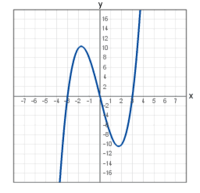ProofFirst part: just note that the graph of  is the same as the pre-image
is the same as the pre-image  where
where  is the diagonal in
is the diagonal in  .
.
Second part:
For any open  , we check
, we check  is open. So take any
is open. So take any  , we construct some open neighborhood
, we construct some open neighborhood  of
of  , such that
, such that  .
.
Since the graph of  is closed, for every point
is closed, for every point  on the "vertical line at x", with
on the "vertical line at x", with  , draw an open rectangle
, draw an open rectangle  disjoint from the graph of
disjoint from the graph of  . These open rectangles, when projected to the y-axis, cover the y-axis except at
. These open rectangles, when projected to the y-axis, cover the y-axis except at  , so add one more set
, so add one more set  .
.
Naively attempting to take  would construct a set containing
would construct a set containing  , but it is not guaranteed to be open, so we use compactness here.
, but it is not guaranteed to be open, so we use compactness here.
Since  is compact, we can take a finite open covering of
is compact, we can take a finite open covering of  as
as  .
.
Now take  . It is an open neighborhood of
. It is an open neighborhood of  , since it is merely a finite intersection. We claim this is the open neighborhood
, since it is merely a finite intersection. We claim this is the open neighborhood  of
of  that we want.
that we want.
Suppose not, then there is some unruly  such that
such that  , then that would imply
, then that would imply  for some
for some  by open covering, but then
by open covering, but then  , a contradiction since it is supposed to be disjoint from the graph of
, a contradiction since it is supposed to be disjoint from the graph of  .
.
Non-Hausdorff spaces are rarely seen, but non-compact spaces are common. An example of non-compact  is the real line, which allows the discontinuous function with closed graph
is the real line, which allows the discontinuous function with closed graph  .
.




















































